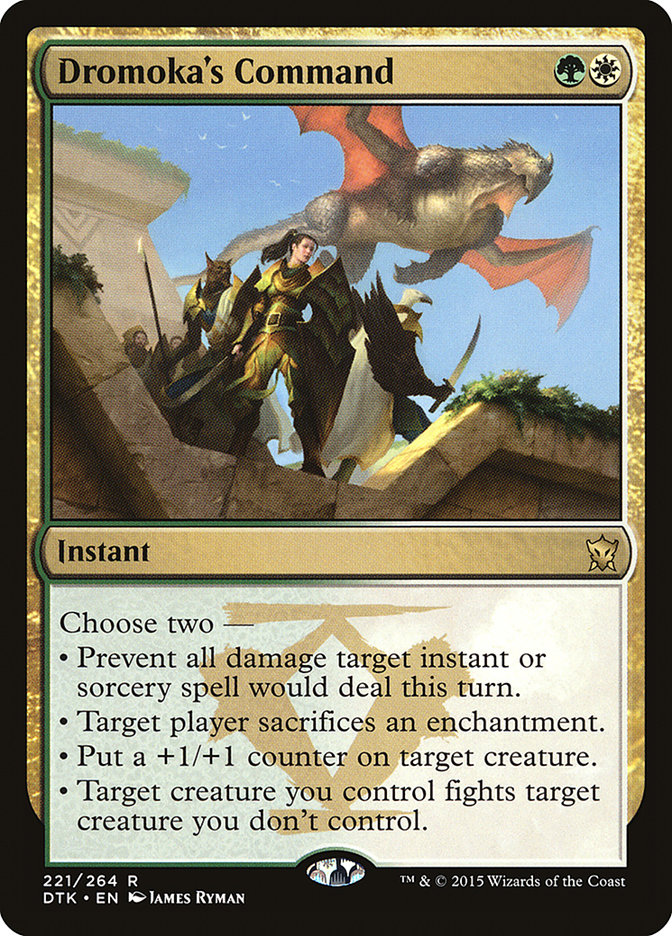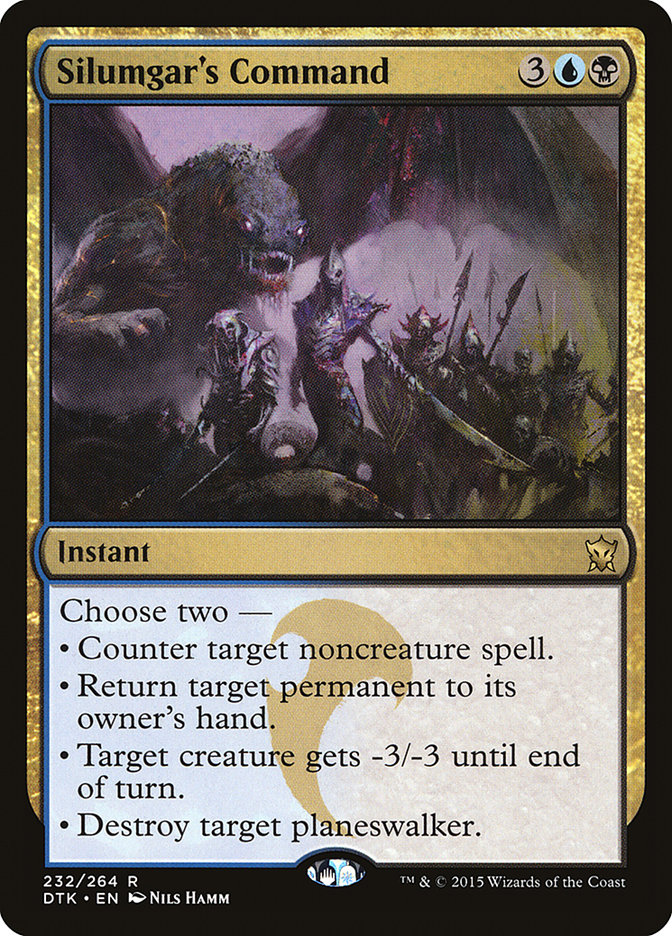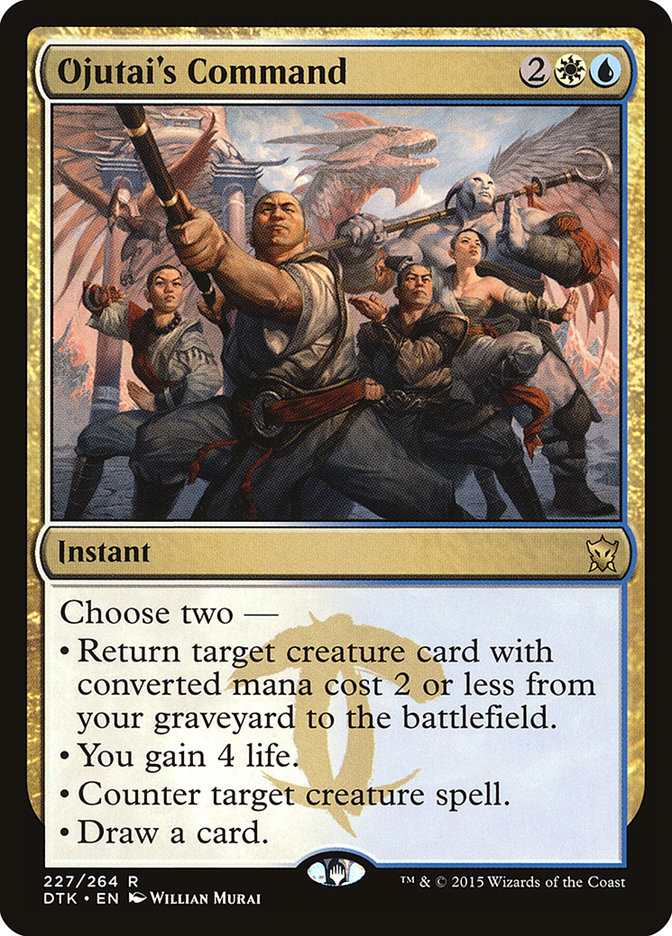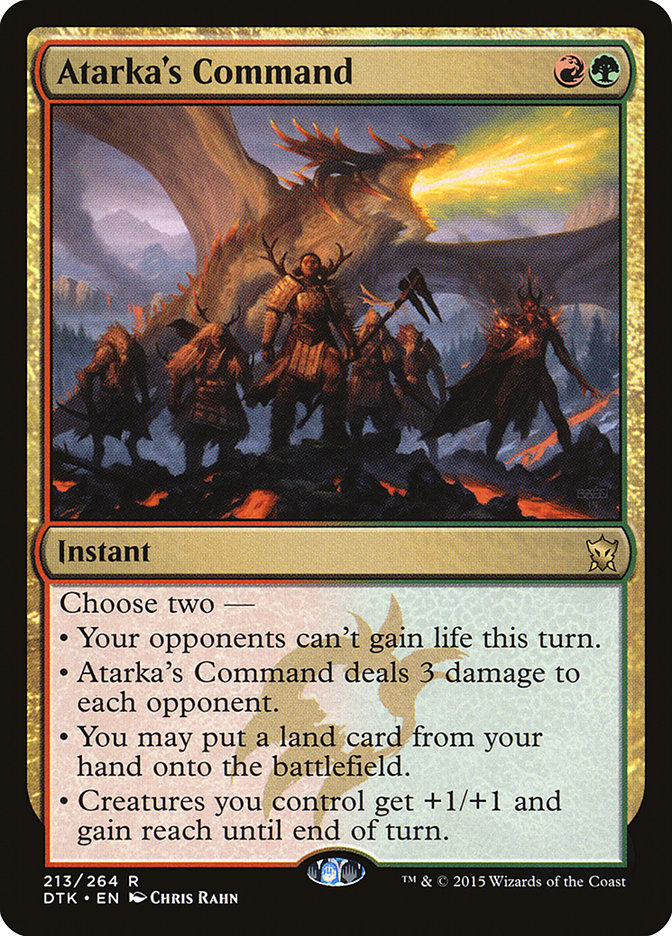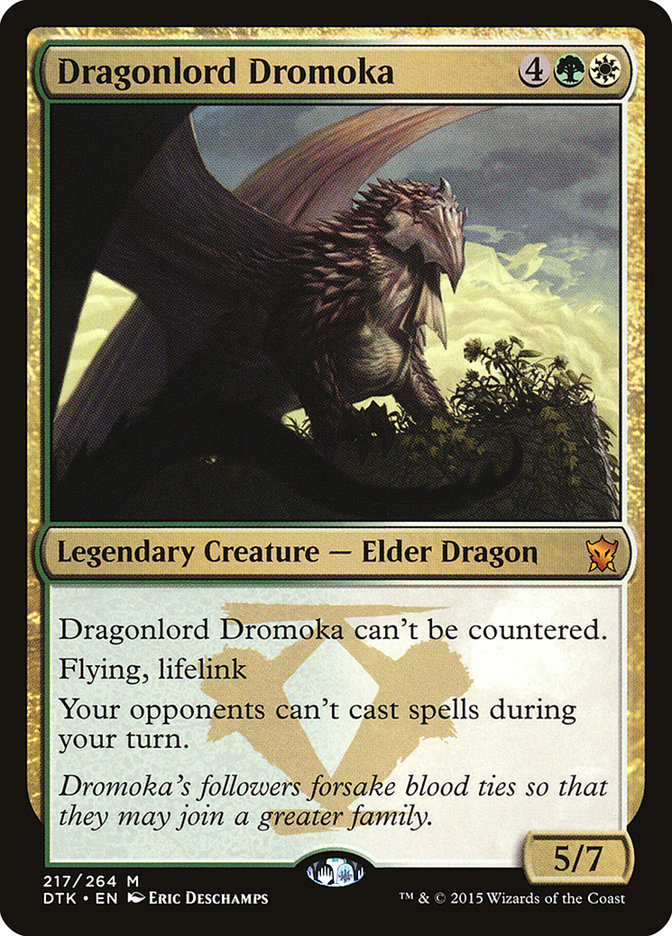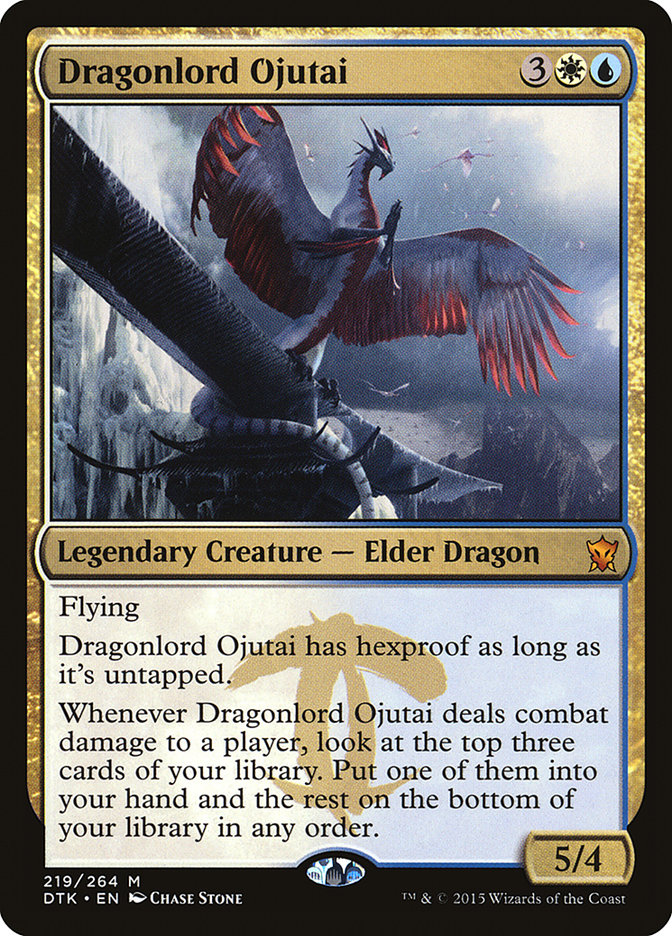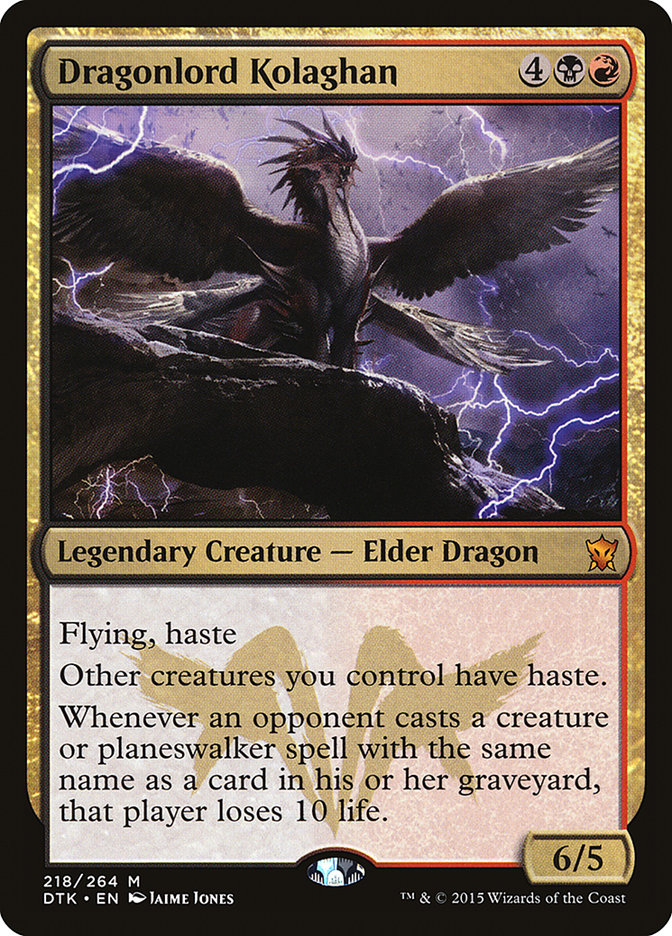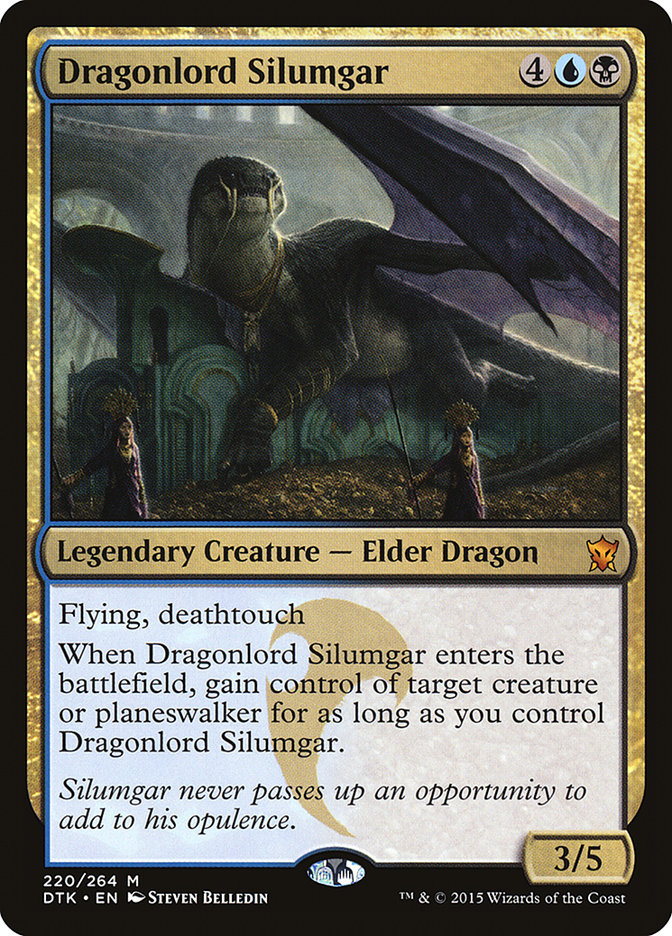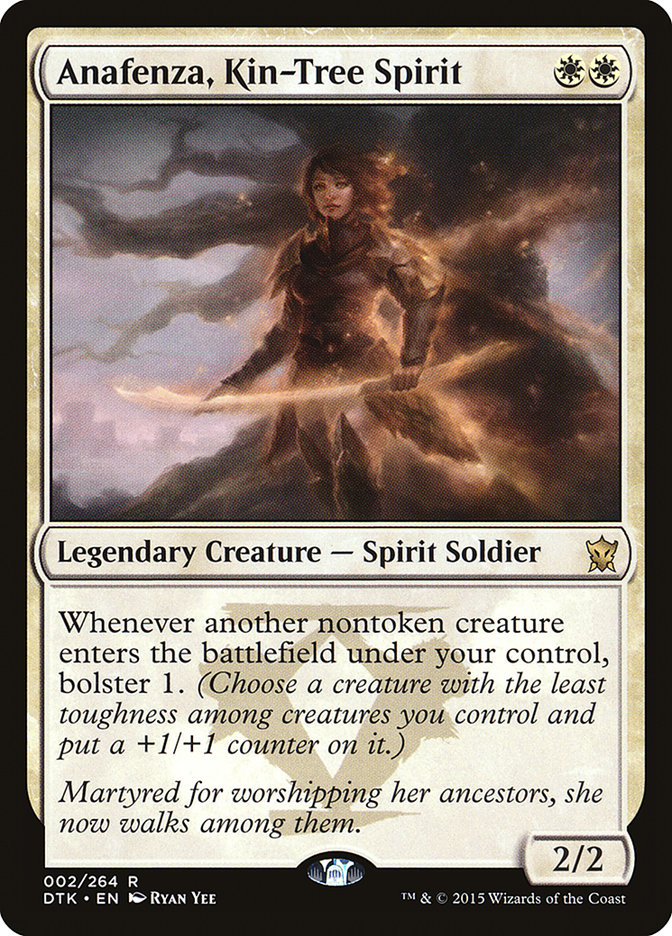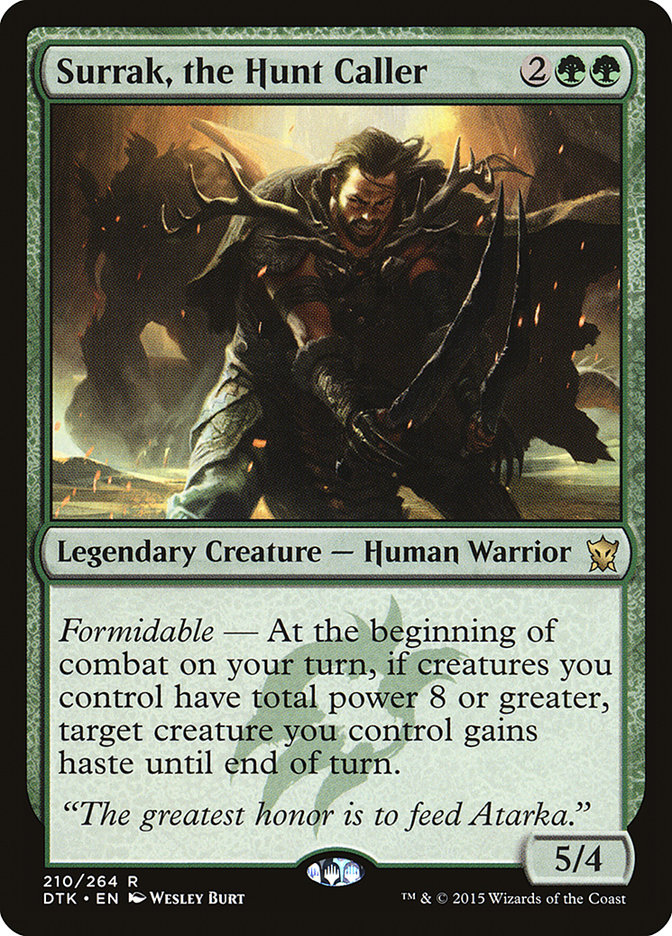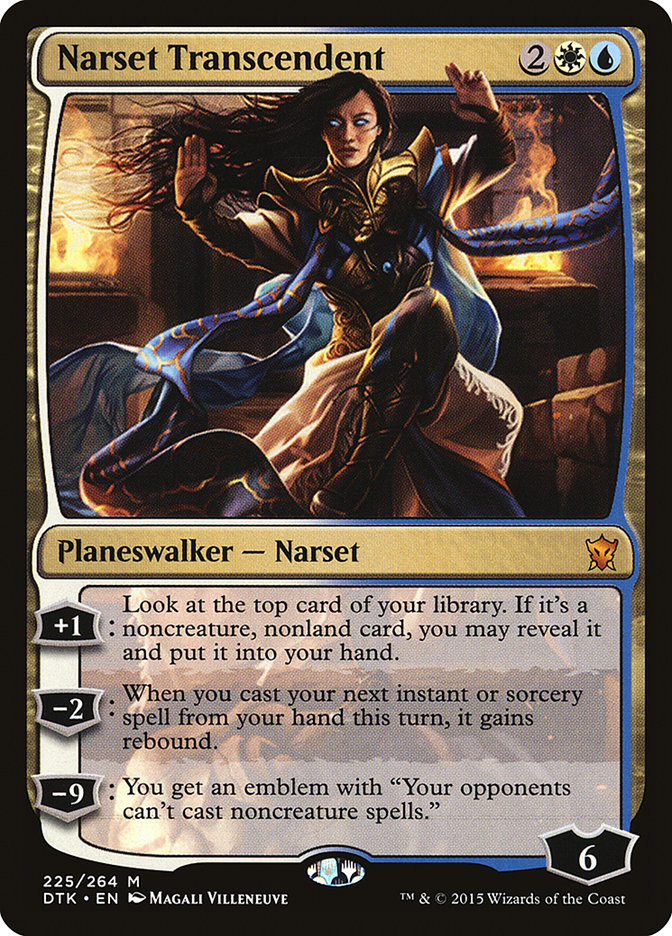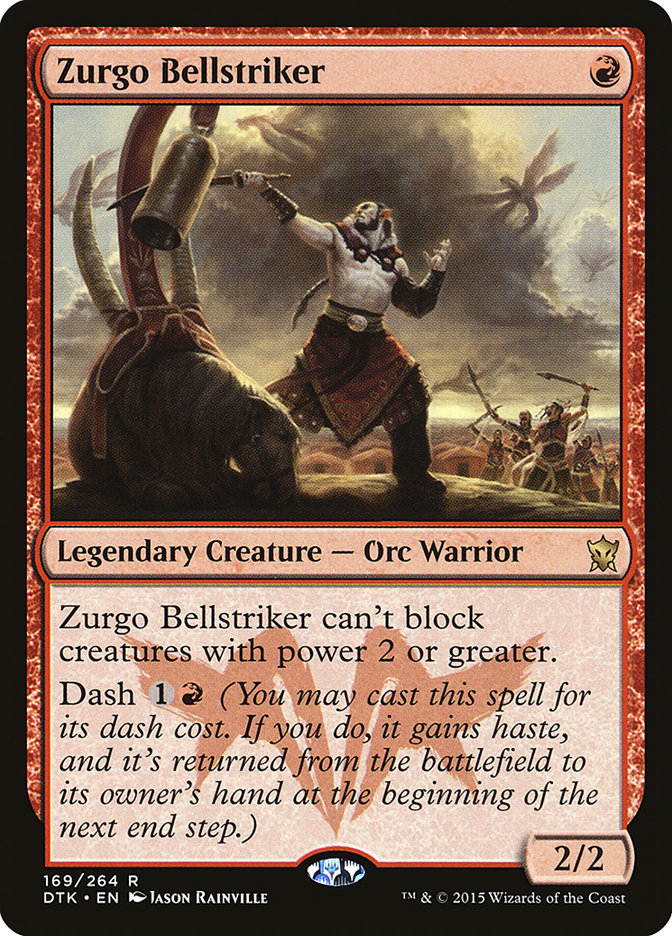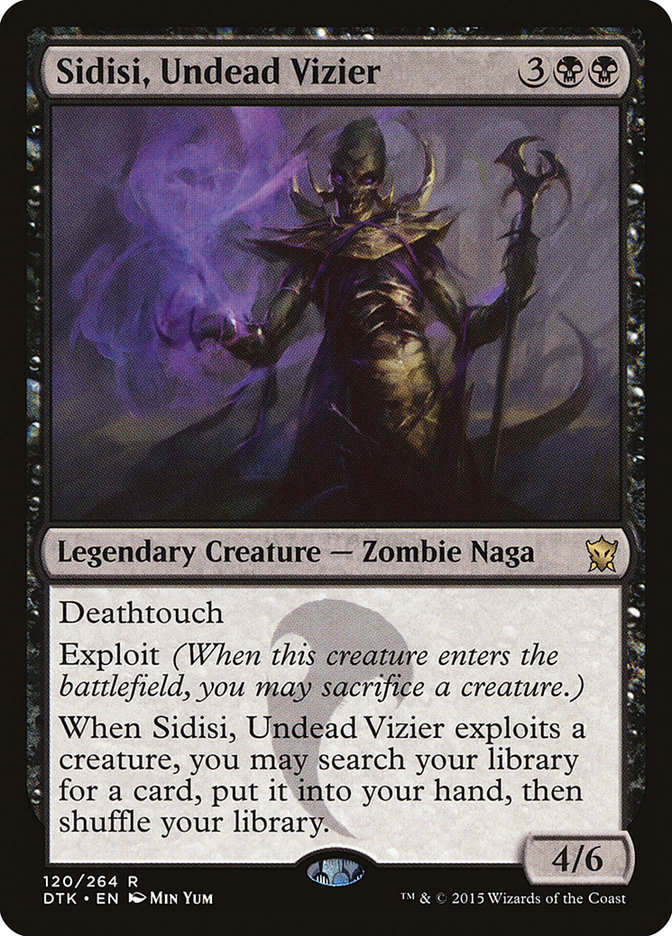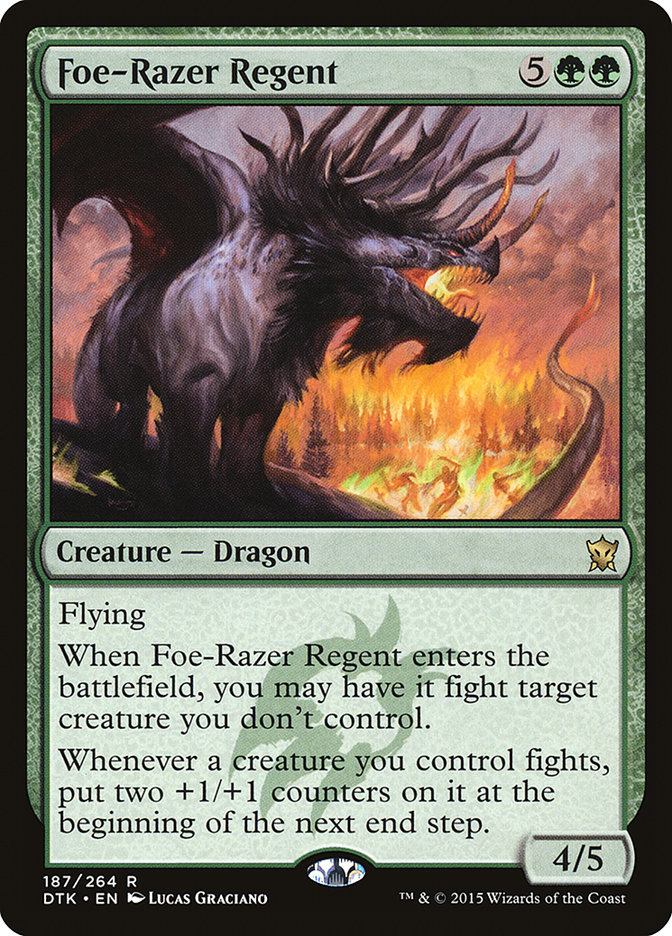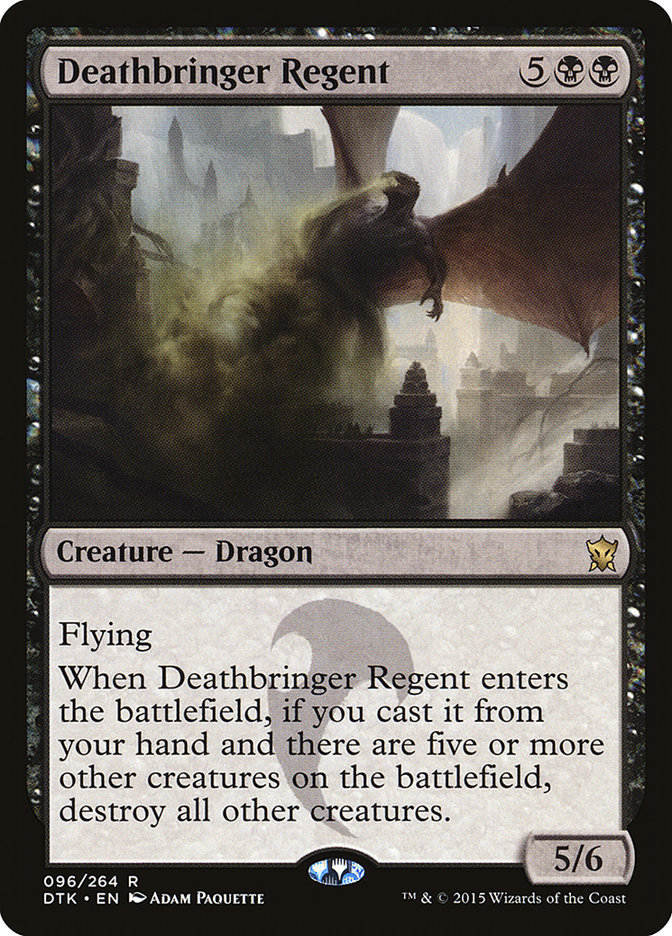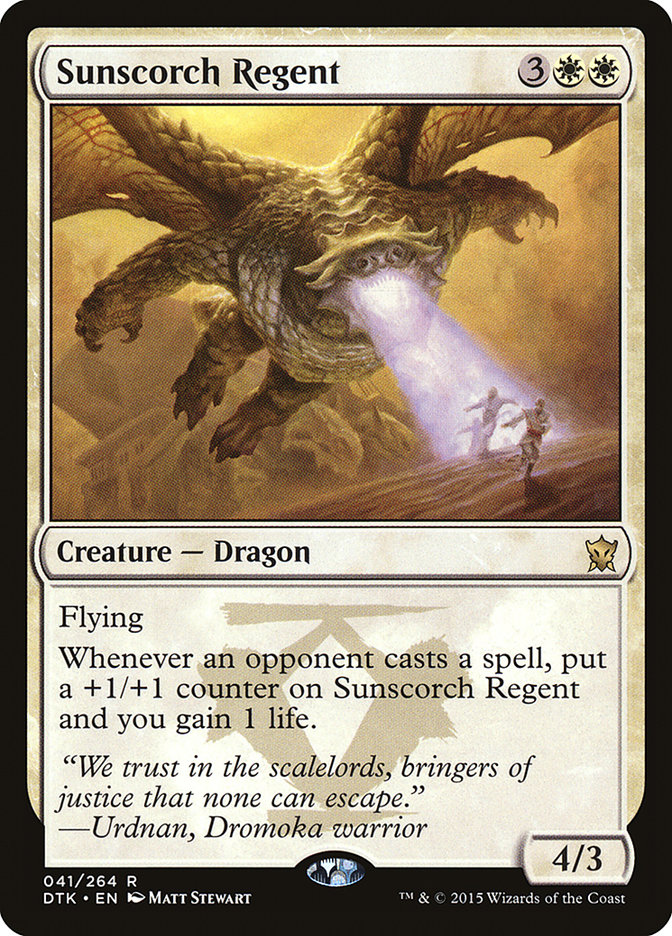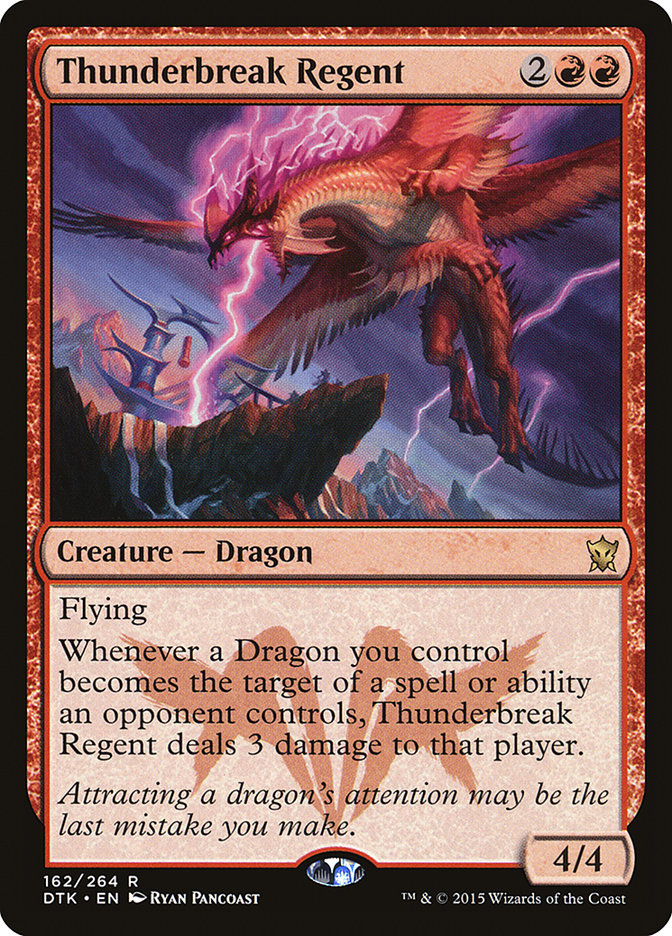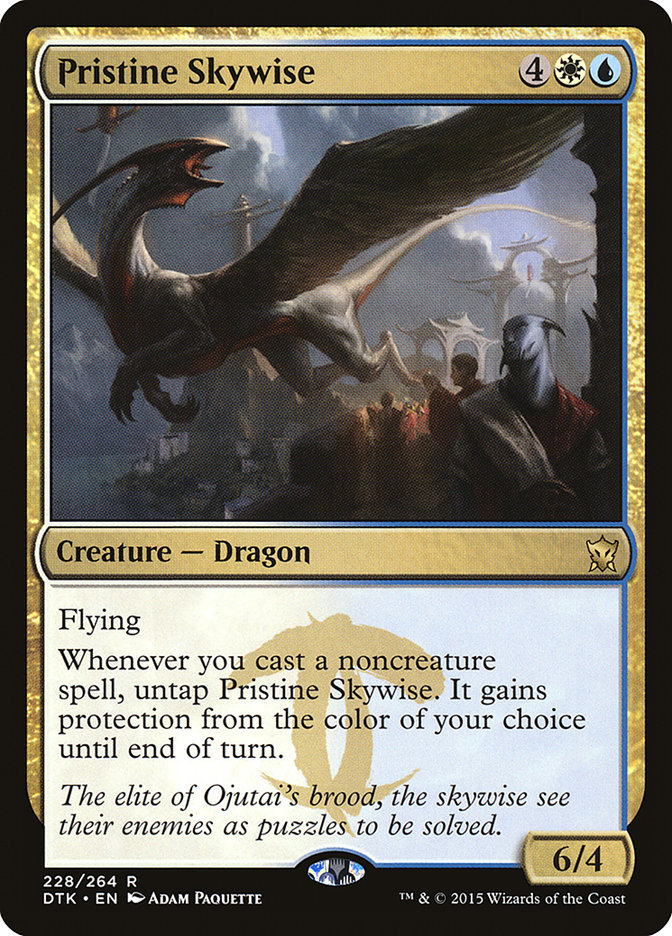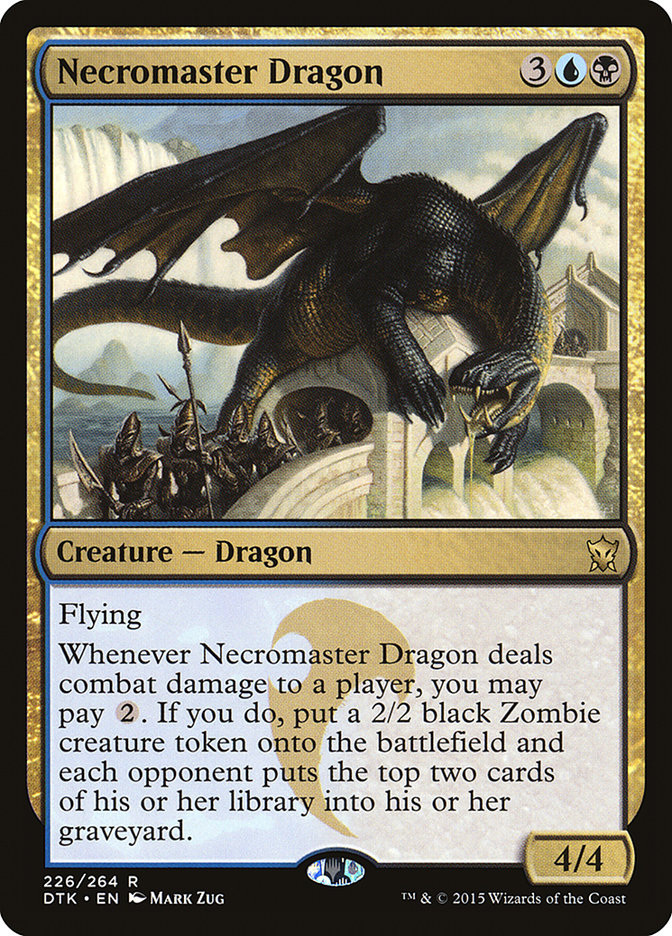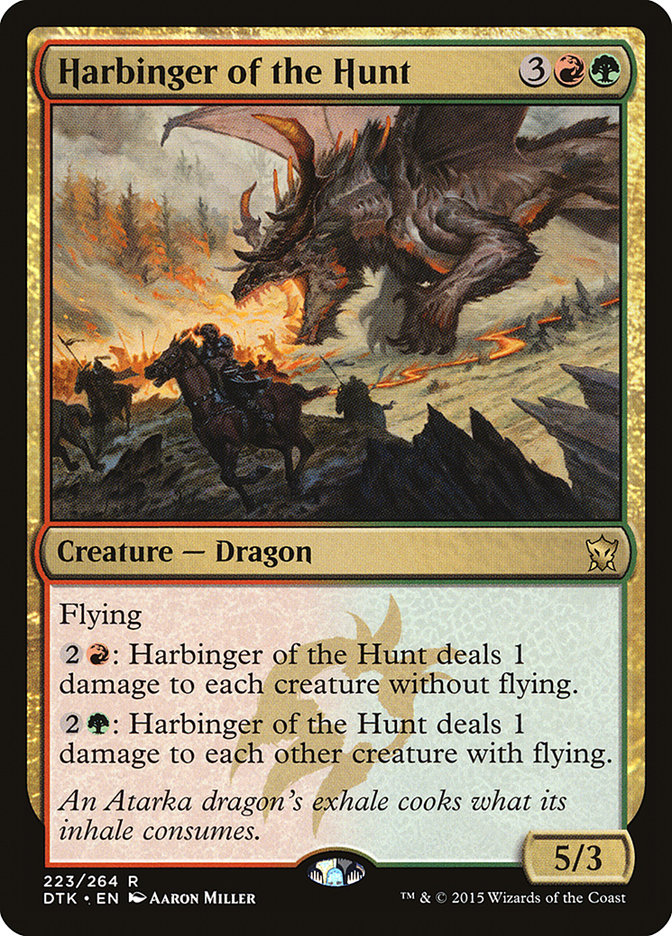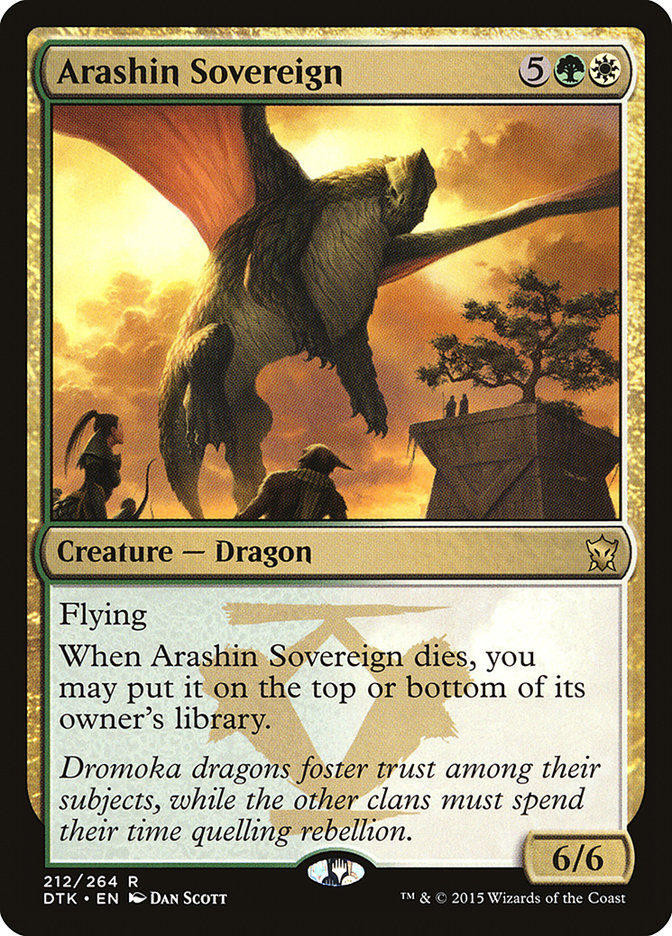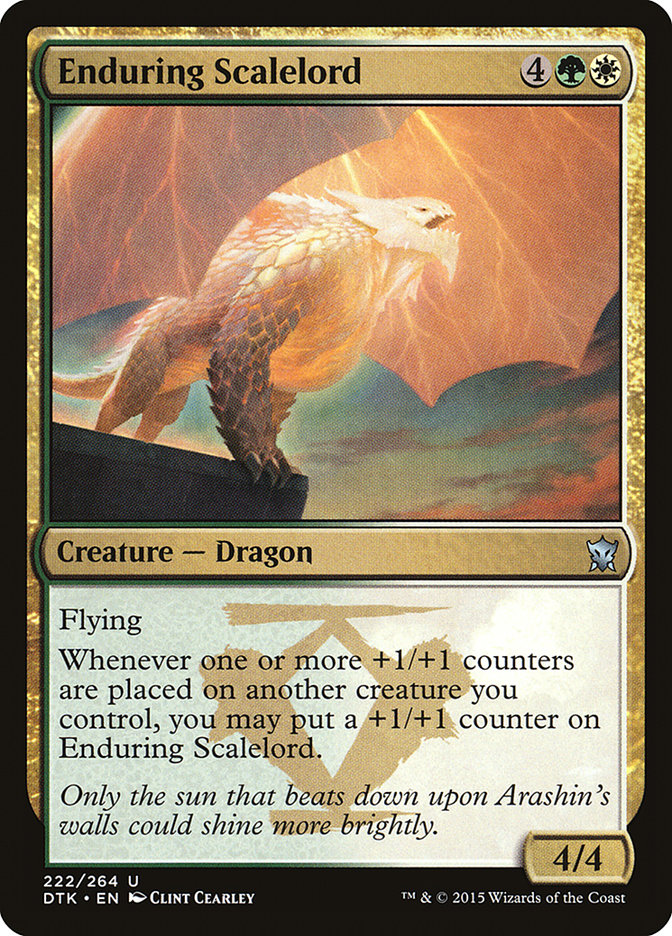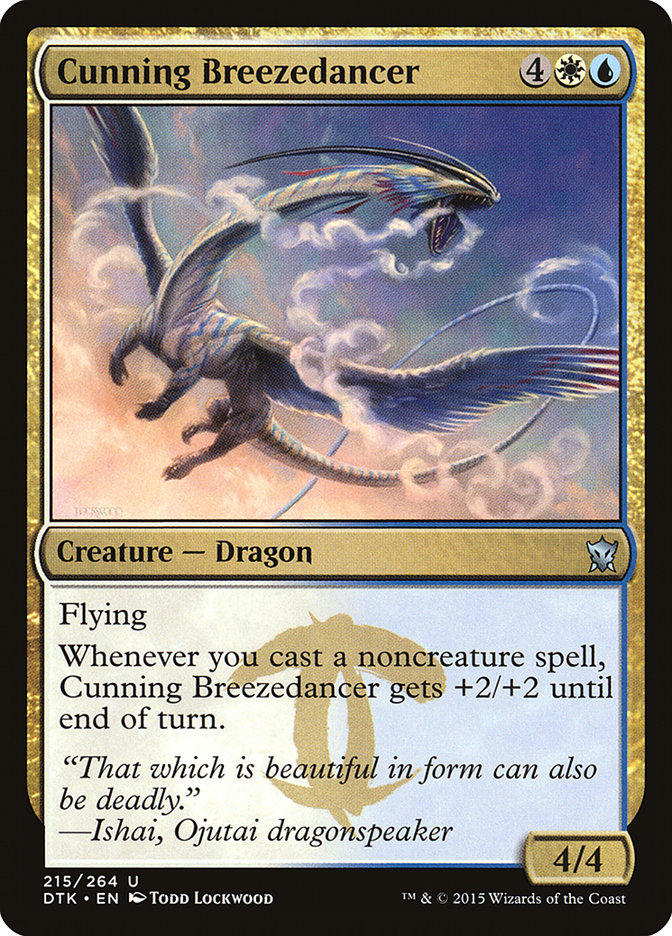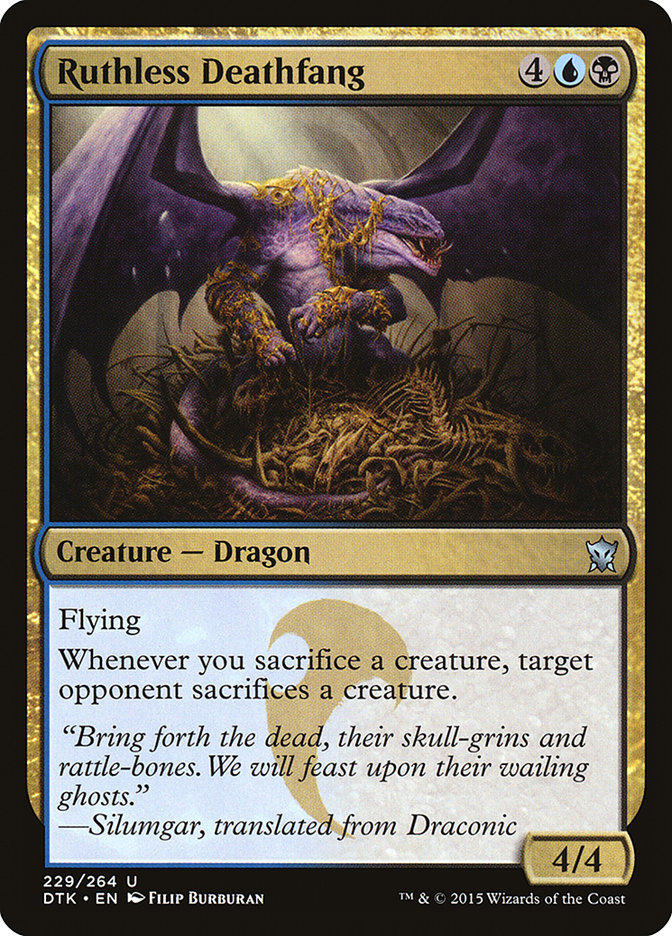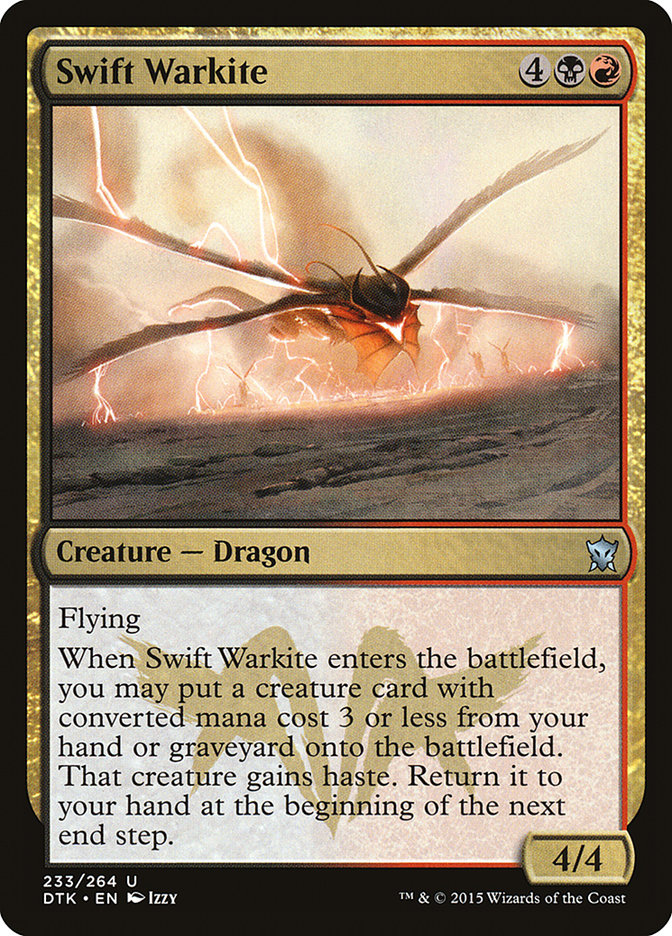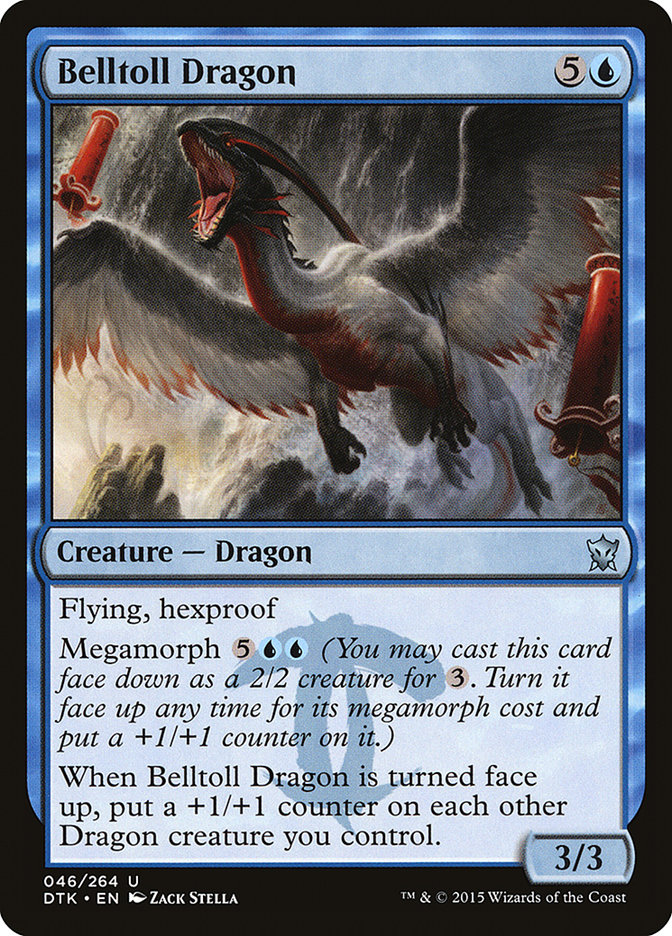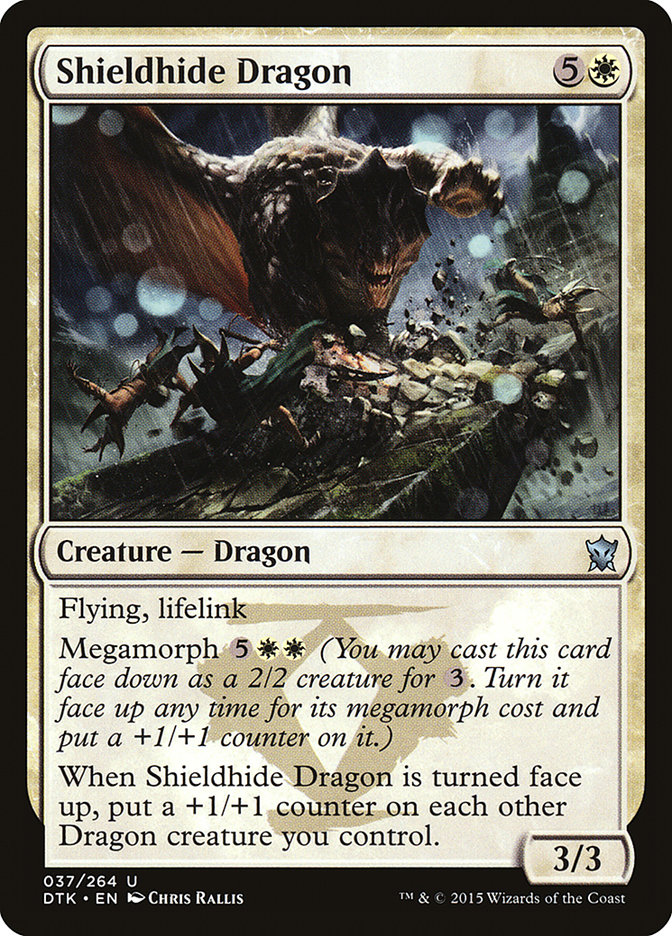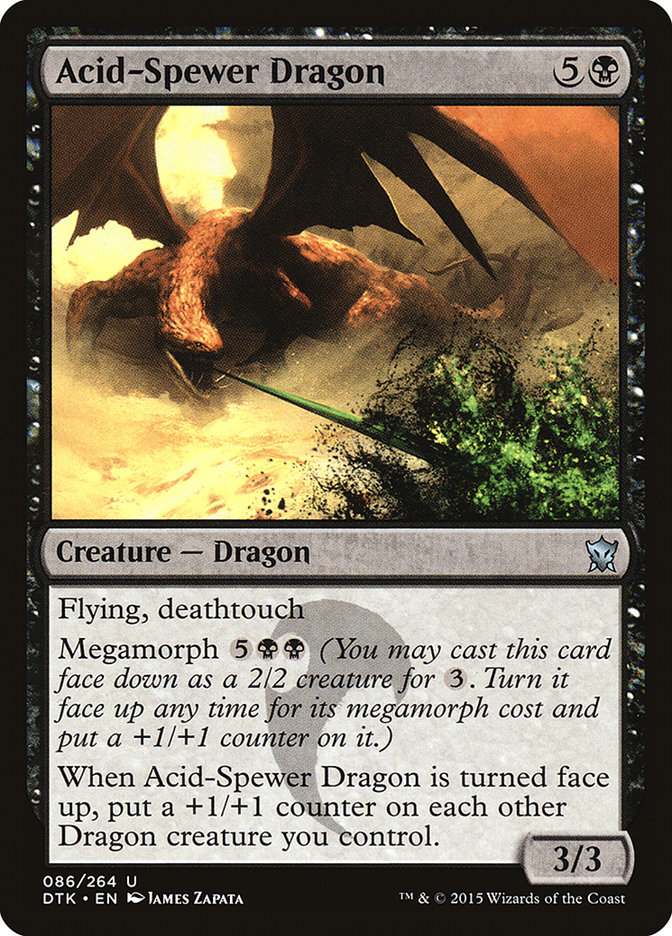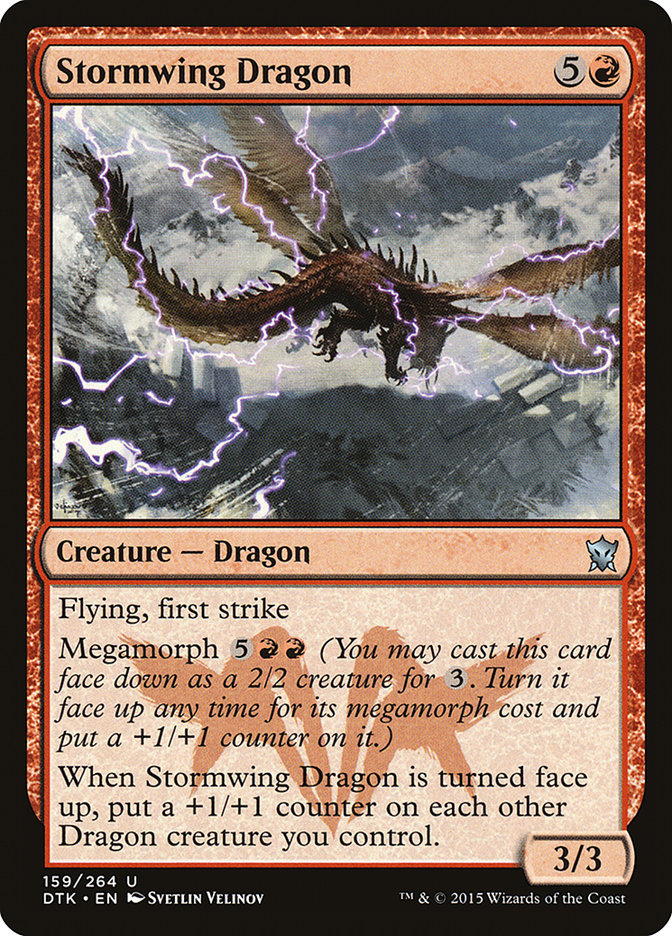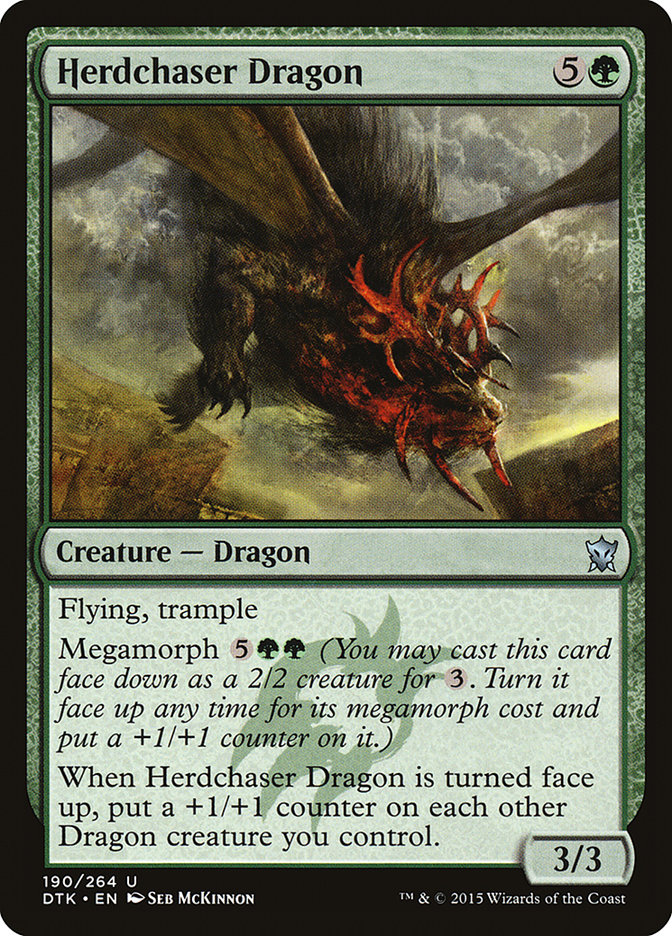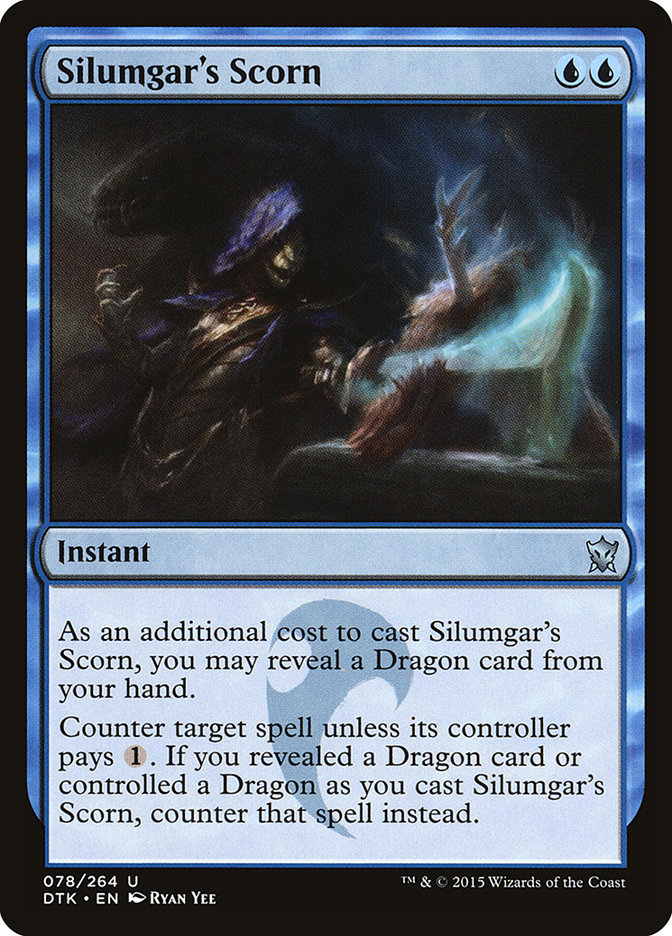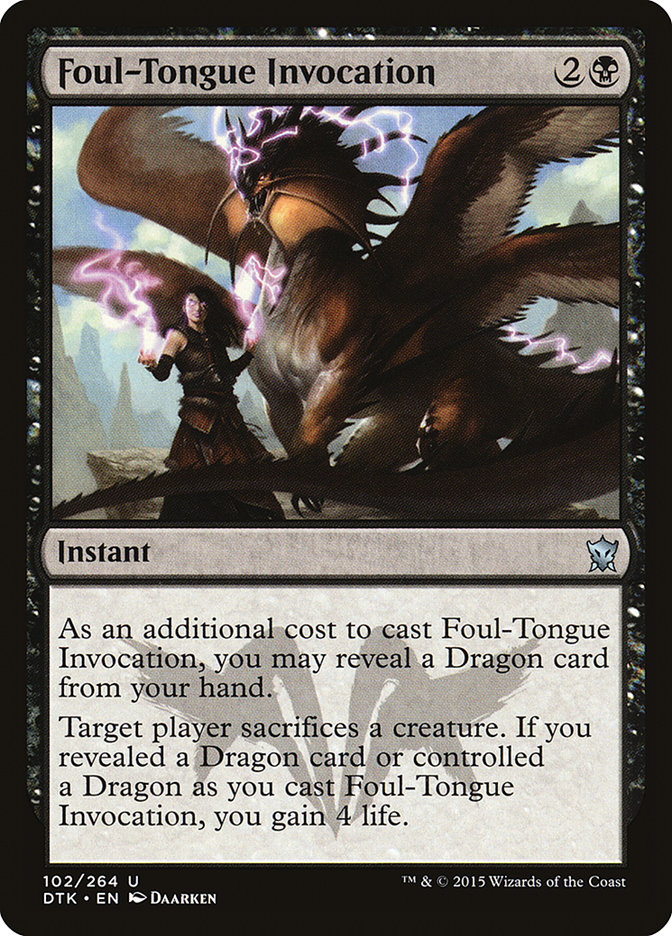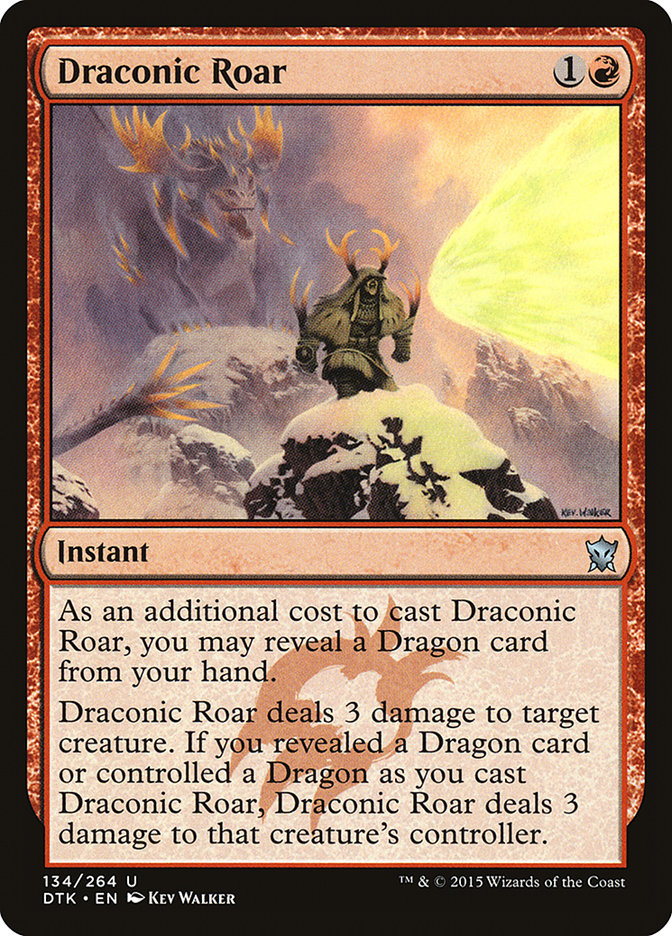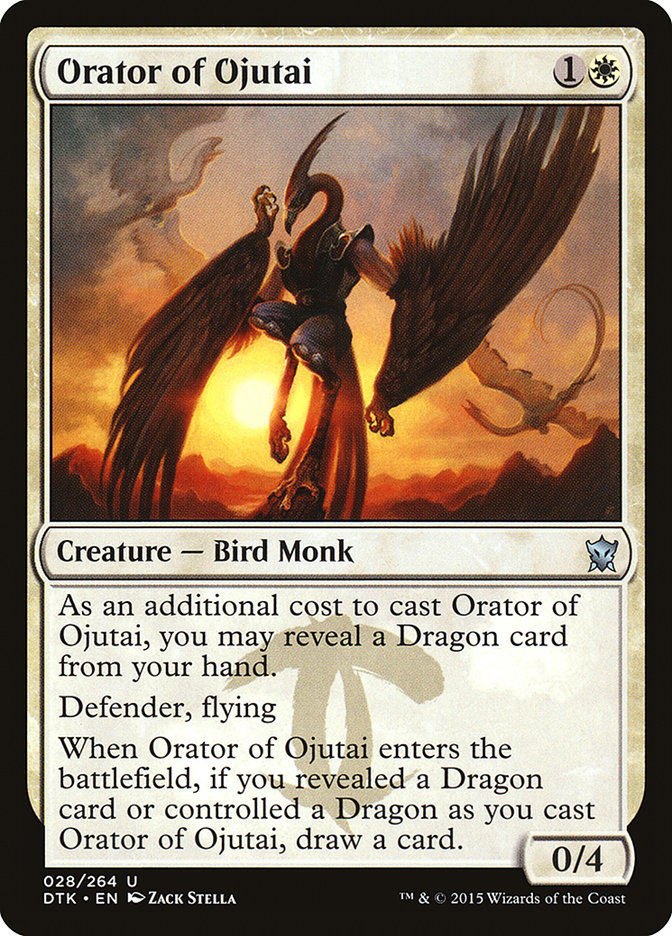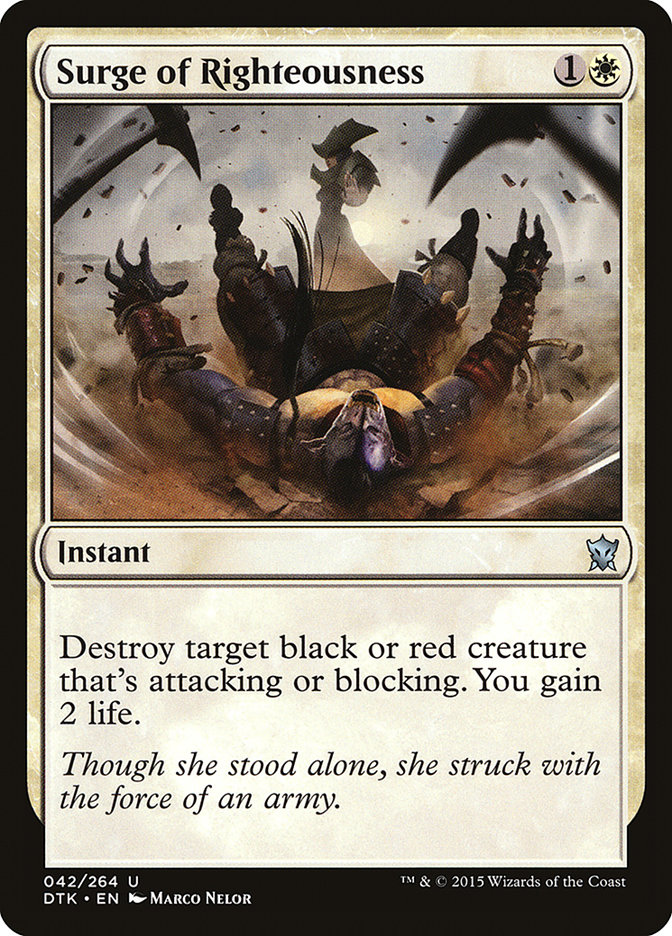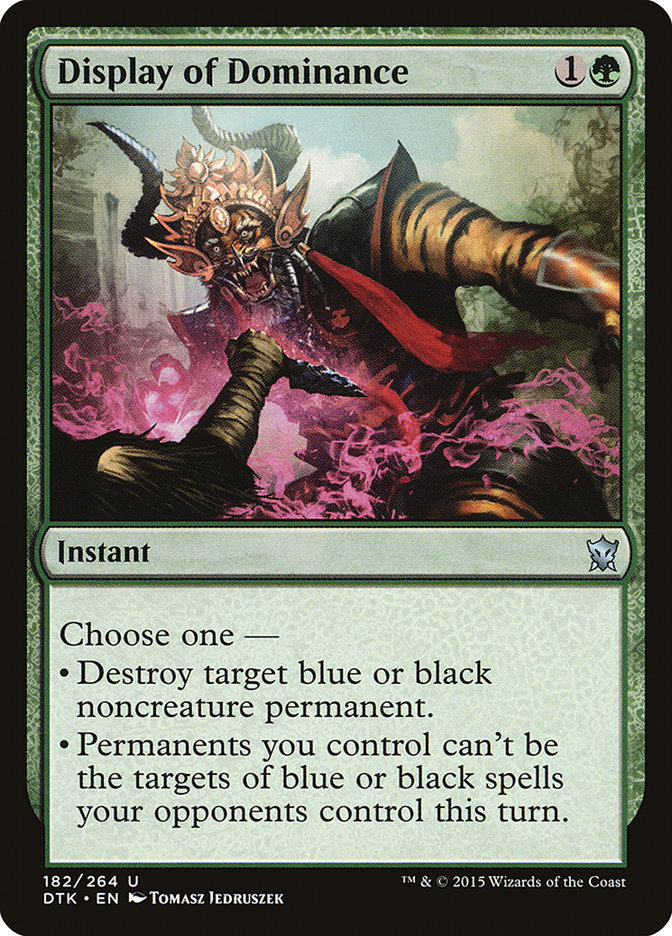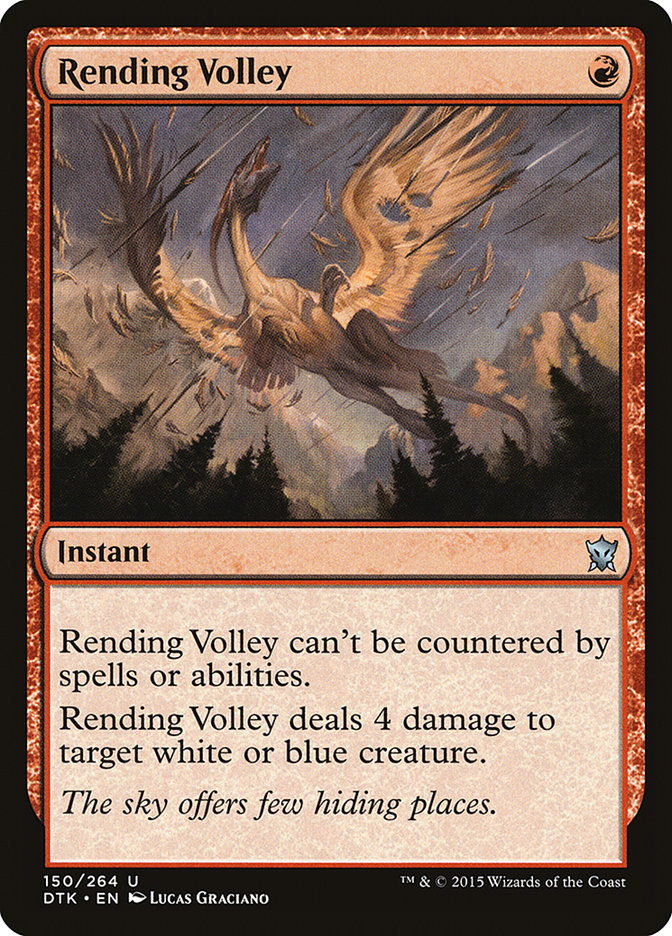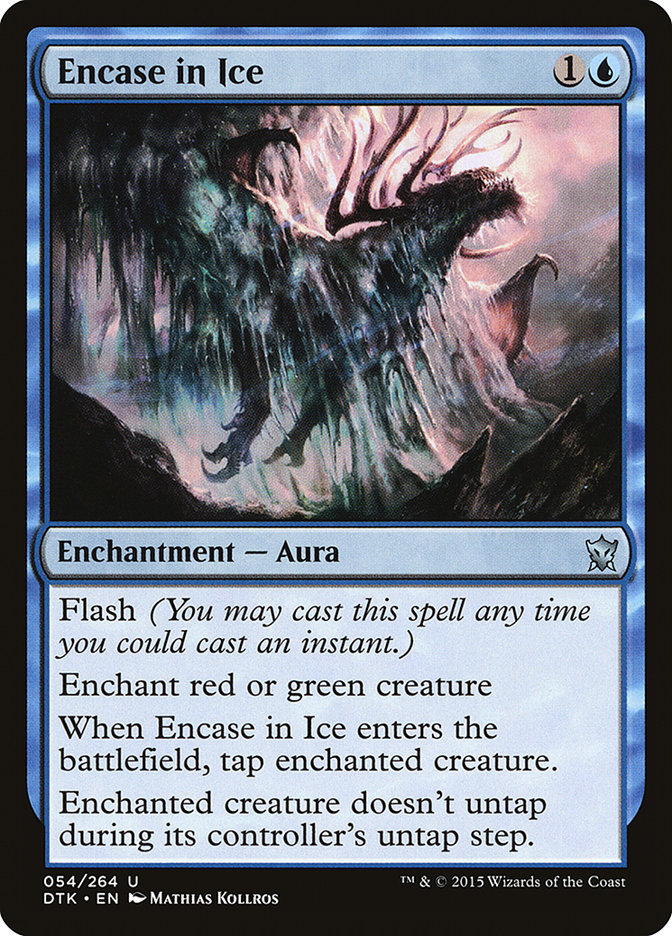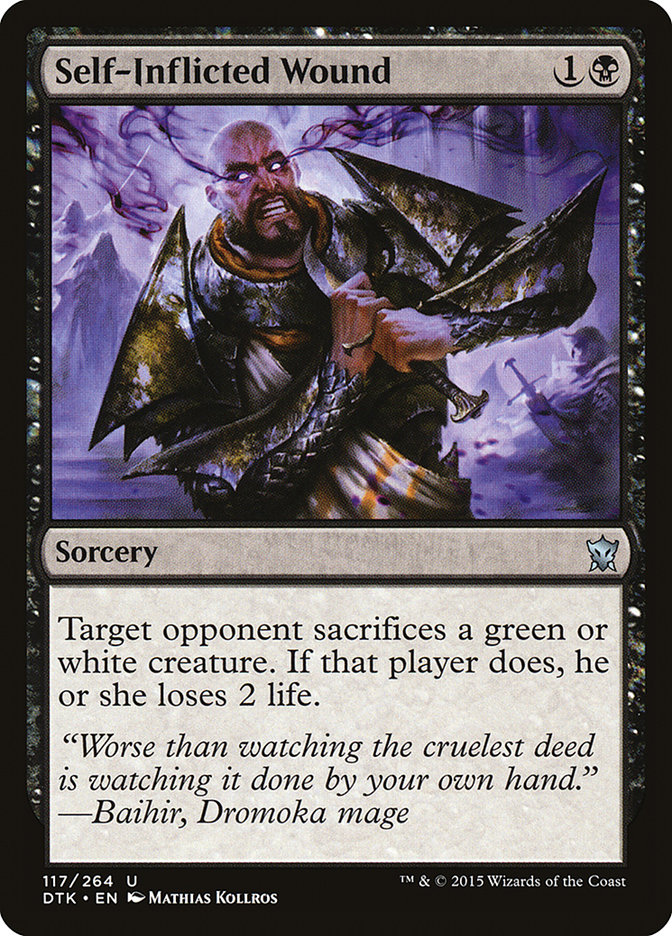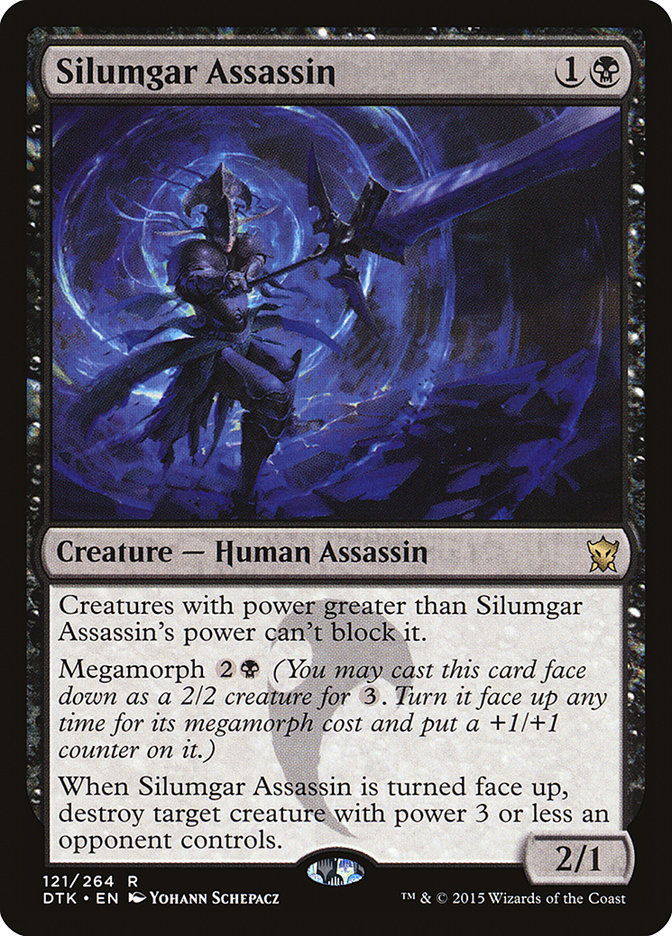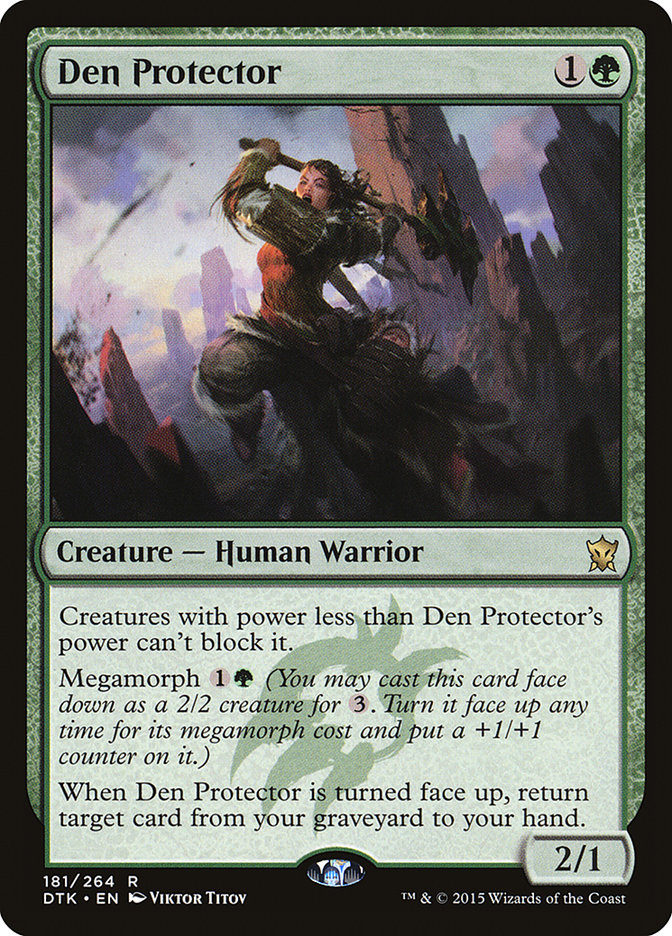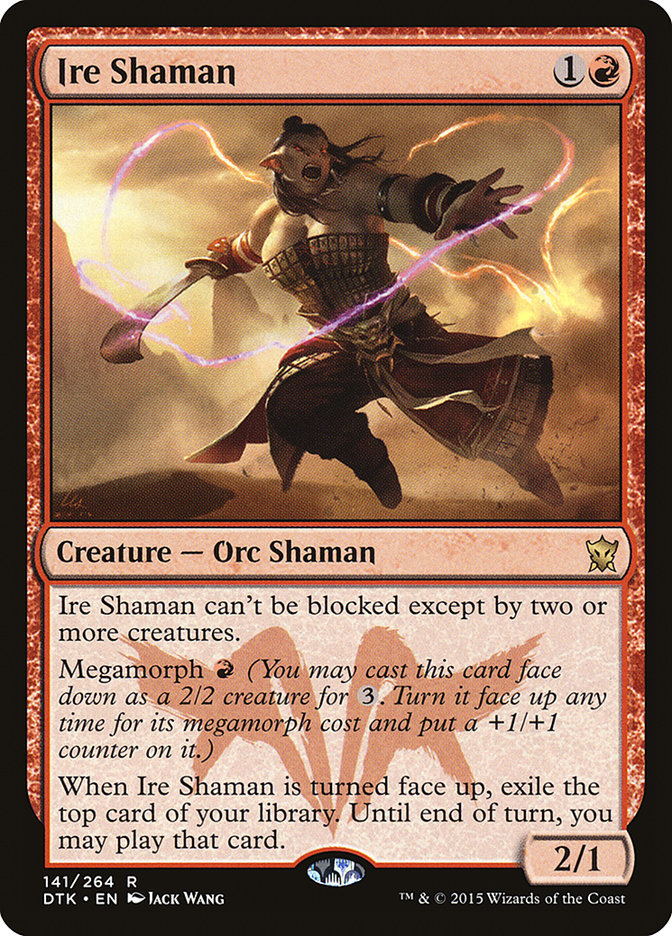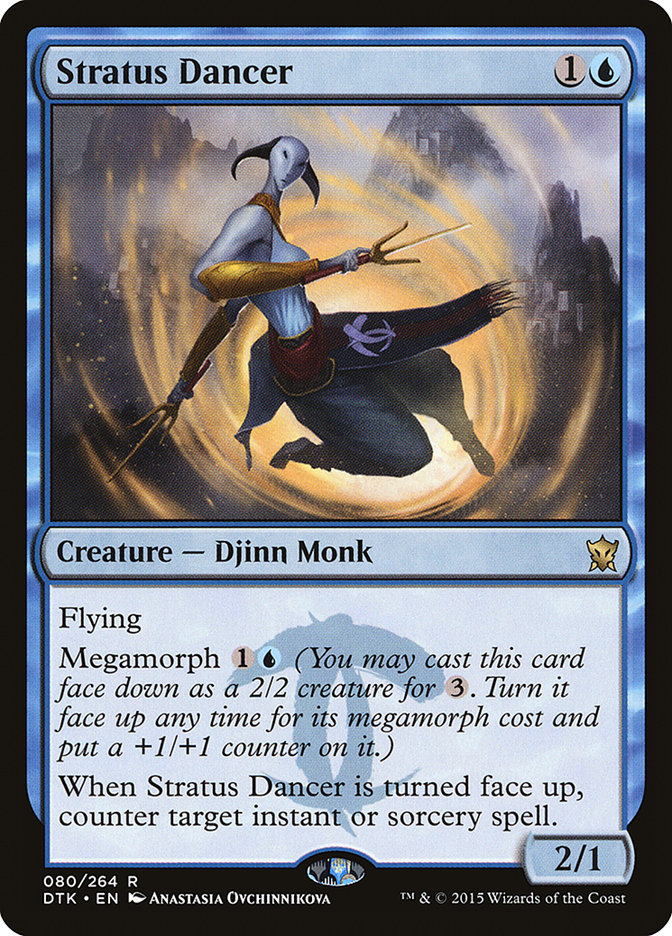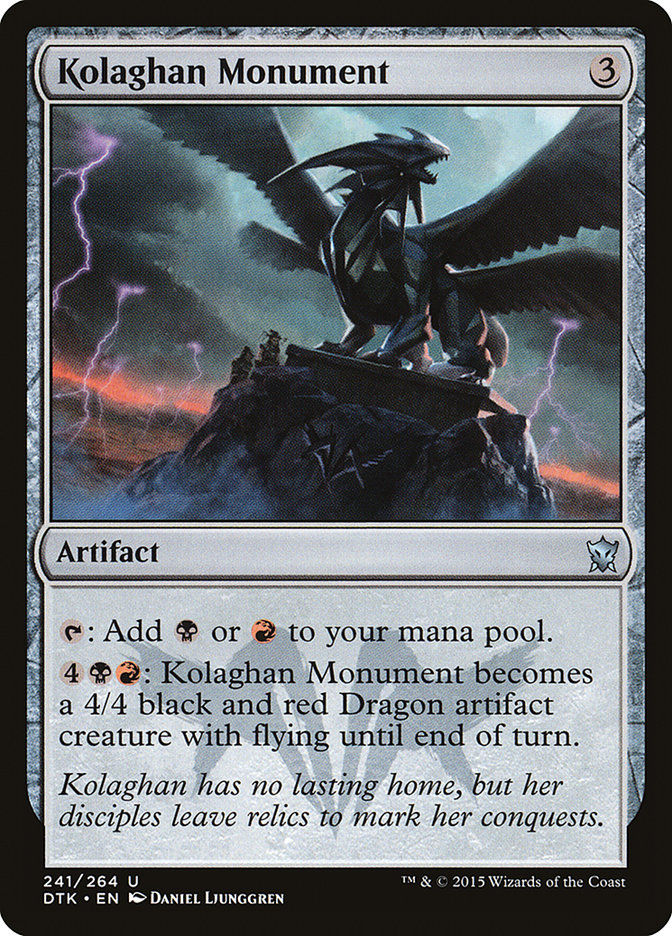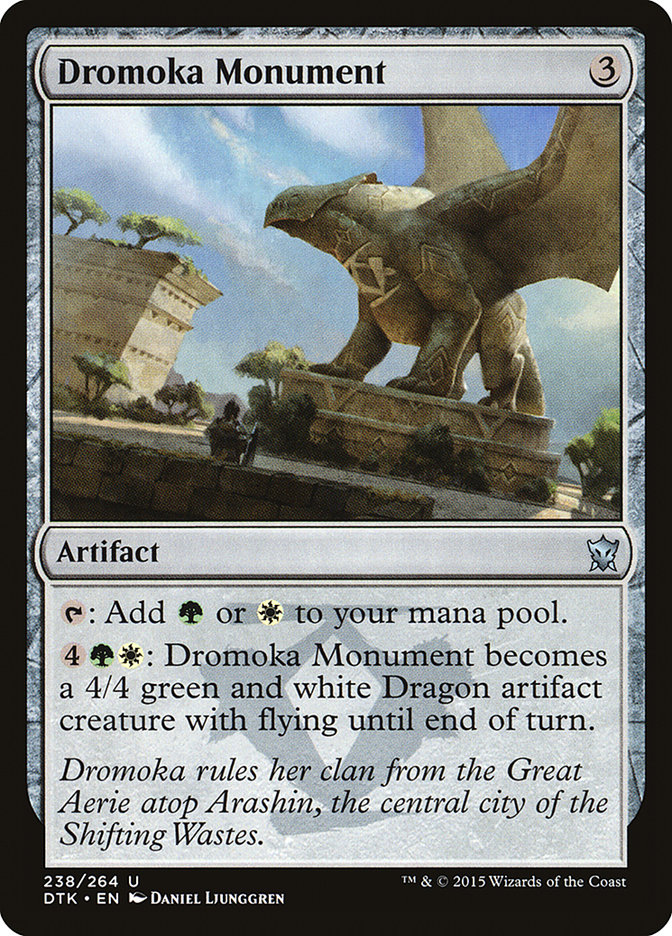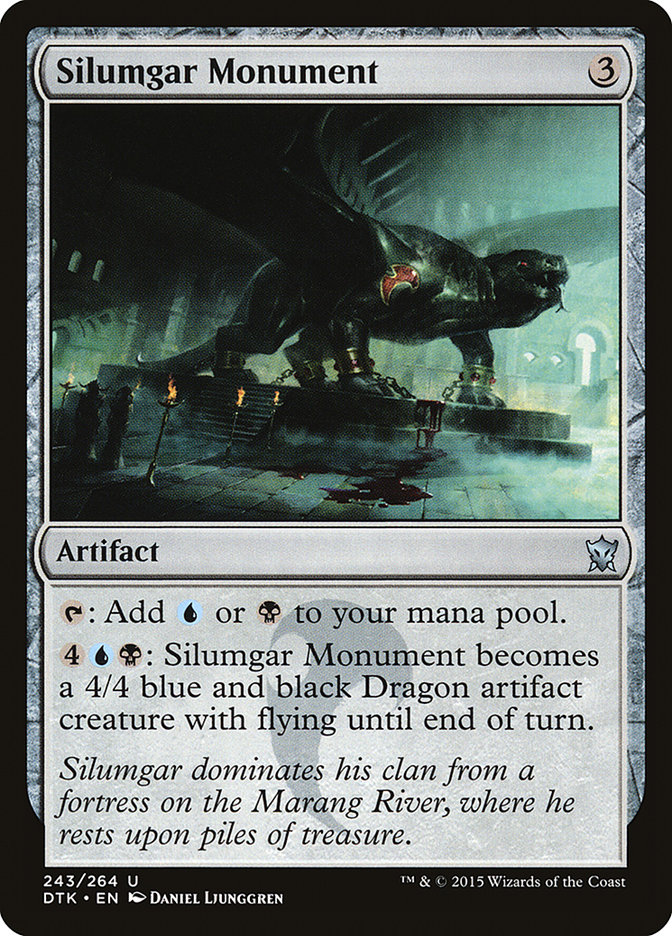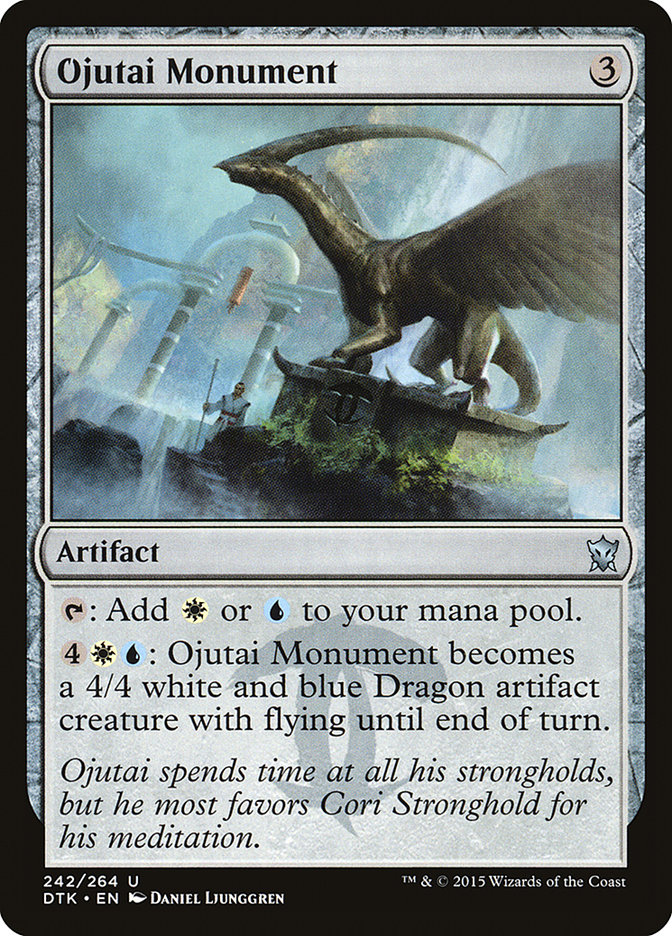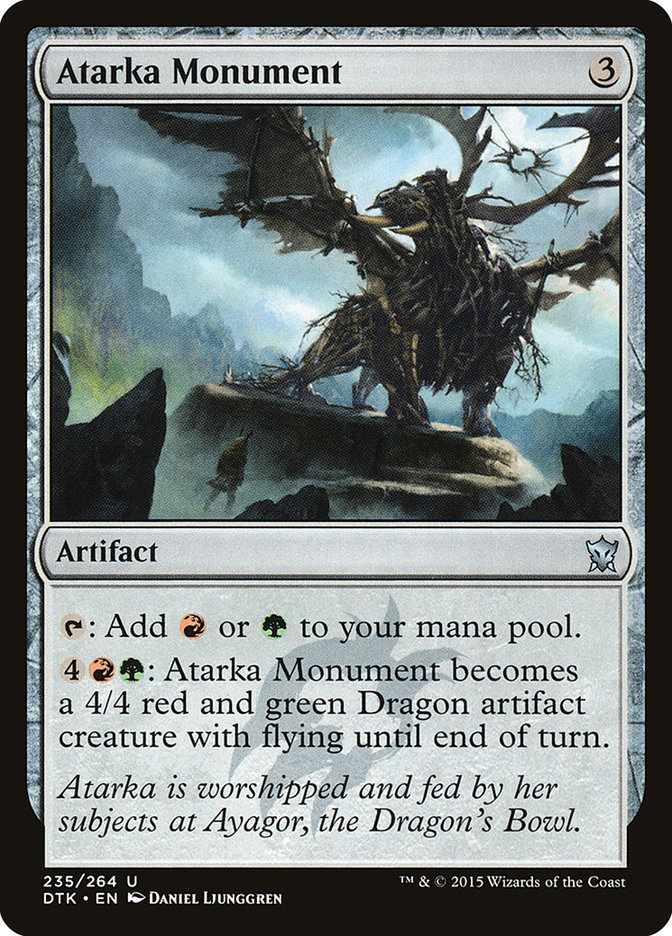In this week before the Prerelease of Dragons of Tarkir, we know all the cards in the set, but few have had a chance to play with many (or any) of the
cards. It’s early to speculate on just how this set might impact Standard, or even Modern, but it can be fun to start thinking about what value the cards
might have. Dragons of Tarkir is a fantastic set with way too many good cards to look into all of them in a single article, so to give myself some
structure, I’ve decided to attempt to pick the best card in each cycle I can find in Dragons of Tarkir.
The Commands
Wizards has printed a huge number of different charms throughout the years, and they’ve always been cards that allowed you to choose one of three different
modes, and they’ve existed in one, two, and three colors. Now, they’ve shown that they’re willing to give commands a similar treatment. Commands are modal
spells that allow you to choose two of four possible modes. Seeing them brought back as gold cards is pretty exciting, as the originals were great, the new
ones are great, and the possibility of more in the future, maybe even in three or four colors, is also great.
The commands in this set are all solid, but for my money, I think the cheapest are the best. Any of them do great things that easily allow you to generate
a two-for-one, so I’d rather pay as little as possible for it. Besides, the value of their incredible flexibility goes up a lot if you don’t have to commit
much mana to casting them. With this in mind, I think Dromoka’s Command is the best, which is high praise because it’s up against Atarka’s Command, which I
think is the best card in the set for Modern.
Why do I think Dromoka’s Command is the best if Atarka’s is better in Modern? Well, I’m judging primarily for Standard, and the “Target player sacrifices
an enchantment” mode is much better there. Also, with Modern being a faster format, it is much more likely to value the sheer damage output per mana spent
of Atarka’s Command. While I recognize the power of that mode and that strategy in Modern, I think it’s a lot harder to take advantage of in Standard. I
think both cards are absolutely outstanding, however, and I’d be surprised if either didn’t see play in either format.
Elder Dragon Legends
Once again, my preference for lower casting costs trumps this category. Dragonlord Ojutai looks outstanding to me. The low cost is a huge plus, and coming
down with hexproof makes this an excellent finisher for a control deck, as you can wait to tap it until you can protect it with counterspells. U/W Control
decks aren’t always looking for this kind of finisher, and already have good options, including Prognostic Sphinx, which protects itself similarly, but
also matches up well against Elspeth, Sun’s Champion. As a result, I’d think Dragonlord Ojutai might not even see play, but I think the desire to have a
dragon for cards like Orator of Ojutai and Silumgar’s Scorn will likely push people to include Dragonlord Ojutai.
I’m not confident that Dragonlord Ojutai will see the most play out of this cycle because of what I said about those decks not always looking for that kind
of card and because U/W Control still might not be the blue control deck of choice. I think I’m actually more confident that Dragonlord Dromoka and
Dragonlord Atarka will see more play than Dragonlord Ojutai just because they’re green, and the effects of both are definitely large enough to be worth
ramping into. Despite that, Ojutai’s still my pick at the moment for the best of the cycle.
Alternate Khans
The coolest cycle in the set is the alternate paths of the Khans of Tarkir, and all of these new versions are awesome Constructed cards. Anafenza, Kin-Tree
Spirit is my pick for the best of them in Modern, due to her ability to do a Melira, Sylvok Outcast impression with Kitchen Finks (whenever the Kitchen
Finks dies, it comes back, and you get to bolster onto the Kitchen Finks because it only has one toughness, then the counters cancel and you’re back where
you started). Anafenza is better than Melira at this because the text is also great just for beating down in the meantime before you do anything with the
combo.
Anafenza, Kin-Tree Spirit is still a great card in Standard, but there’s a lot less support for a WW casting cost, which I think should hold her back. As
much as I hate to admit it, I think Zurgo Bellstriker is likely the best of this cycle. Narset Transcendent and Surrak, the Hunt Caller are both great, but
Zurgo is an outstanding aggressive red creature that slots into a deck that was already surprisingly good in Standard, and it’s joined by several other
impressive new tools.
Regents
This cycle is kind of all over the place in terms of power level, with Thunderbreak Regent and Icefall Regent being the most likely to see Constructed
play, though I wouldn’t entirely dismiss Sunscorch Regent. Icefall Regent is somewhere between Dungeon Geists and Frost Titan, and both of those cards were
good enough to see a reasonable share of Constructed play.
While I personally like Icefall Regent more, I think my pick for the best is Thunderbreak Regent. When in doubt, the cheapest one is almost always the
best, and while it may seem like an awkward spot for Constructed, being too big for aggro decks and too small for ramp decks, I think this card’s powerful
enough that it should find a home in Standard, and it plays particularly well with Anger of the Gods.
Rare Gold Dragons
This cycle, consisting of Arashin Sovereign, Pristine Skywise, Necromaster Dragon, Boltwing Marauder, and Harbinger of the Hunt is largely a cycle of
Limited bombs that aren’t designed for Constructed play. That said, Boltwing Marauder is the one that comes closest to having a chance there, as it has the
best rate on pure stats per mana and an ability that is potentially abusable.
Uncommon Gold Dragons
This cycle is actually a lot more interesting than the rare cycle, though six mana still likely keeps them out of Constructed play. The most interesting is
Savage Ventmaw, which allows you to go incredibly big the turn after you cast it. If they’re all priced out of Standard, might as well go with the one that
lets you do the sweetest things in casual formats.
Megamorph Dragons
These dragons each differ only by color and a single keyword, and they seem to indicate some bizarre endgame play pattern in which you have a bunch of
dragons and start flipping these up and making all of them bigger each turn. It’s important to know about these things in Limited, because if a morph
hasn’t done anything by the time your opponent hits six mana, there’s a good chance it’s a 4/4 flier with an ability. Despite that threat, these cards
don’t seem great in Limited to me. They’re fine, and you’ll almost always play them, but I don’t expect to be terribly excited to get them in a Draft.
Clearly, the white and blue ones are the best of the bunch, and, as great as hexproof is, Shieldhide Dragon (odd that that name is actually not
the one with hexproof) is my pick for the best of the bunch.
Dragon Rewards
These cards are all great if you can reasonably support their dragon requirement, so it’s hard for me to pick a favorite. I love Wall of Omens. I like that
Silumgar’s Scorn will likely work without a dragon early, and later, you’ll have had time to find a dragon. It also doesn’t have the problem that other
cards like this have: that your opponent can just play around it once they know, because playing around it falls apart if you ever draw a dragon, so they
can’t really try to leave it as a dead card. I’m surprisingly excited for Foul-Tongue Invocation. I think Standard’s been missing a solid edict effect, and
I love reasonable incidental lifegain on black cards, but I’m a little concerned about filling the dragon requirement in black beyond Silumgar, the
Drifting Death. Draconic Roar has the advantage of being red, the color that naturally has dragons, and Searing Blaze is a very powerful card. Finally
getting access to that kind of effect at 1R instead of RR could be a big deal. Finally, Scaleguard Sentinels offer a great rate and a good enabler for
green devotion except for the lack of green dragons.
Ultimately, I think my pick for the best, disappointingly, is Draconic Roar, but personally, I’m much more interested in Silumgar’s Scorn and Foul-Tongue
Invocation.
Hate Cards
These are all very solid sideboard cards, and Rending Volley is an important upgrade to Combust in Modern that’s even better against Splinter Twin (though
this one misses Siege Rhino). Despite its importance to Modern, my focus on Standard leads me to a different (and likely surprising) choice here. My pick
is actually Surge of Righteousness, which is certainly worse than Celestial Purge in Modern, but I’m very afraid of the aggressive red deck in Standard,
and I think gaining two life while killing their creature at a reasonable price is going to be important to fighting that deck.
2/1 Megamorphs
This is another great cycle, and all of these cards are sweet. As much as I like the effort this set makes to bring back Mono-Blue Devotion, I expect it to
come up a little short, and without it, I think Stratus Dancer won’t have a great home. My pick for the best of this cycle is Ire Shaman, because I think
it has the best deck to support it in Mono-Red Aggro. I actually think it’s very good there. Red’s a little low on really good two-drops right now, and the
evasion is quite real. If you don’t have anything else to do, this is a perfectly respectable two-mana play, but in the lategame, you’ll morph it, and once
you flip it over its text should be almost indistinguishable from “draw a card,” and it comes at a great rate.
Monuments
It probably seems a little silly to rank this cycle since they’re all more or less exactly the same, but I wanted to be thorough, and besides, different
colors are quite differently interested in this kind of effect. Looking at the Keyrunes, they were somewhat biased by the different power level of the
creatures they became, but I think they indicated that R/B and U/W where the pairs that were most interested in this kind of effect, and I think that’s
still mostly true. Clearly, the green ones are the worst, because green has better ways to do this, and the others are all reasonable. I think U/W wants to
ramp up from three more than U/B because U/B is generally trying to keep pace with one-for-one answers on turn 3, while U/W is more likely to look to catch
up later. This is even more true with Dragons of Tarkir where I think U/W might be looking to skip from three to five mana to play Dragonlord Ojutai or
Icefall Regent on turn 4.
There’s a reasonable case to be made for Kolaghan Monument because R/B has worse card drawing, and so it’s more likely to care about getting double duty
out of its mana sources as real threats in the lategame. It’s only the fact that I think U/W decks are more likely to want a lot of mana than R/B decks
that makes me choose Ojutai Monument as the best of the cycle.
I believe that’s all the tight cycles in Dragons of Tarkir. Among them, the Commands and the Khans stand out as both the most powerful and coolest cards,
but the 55 cards considered today still only scratching the surface of the far reaching Constructed implications this set brings to the game.


